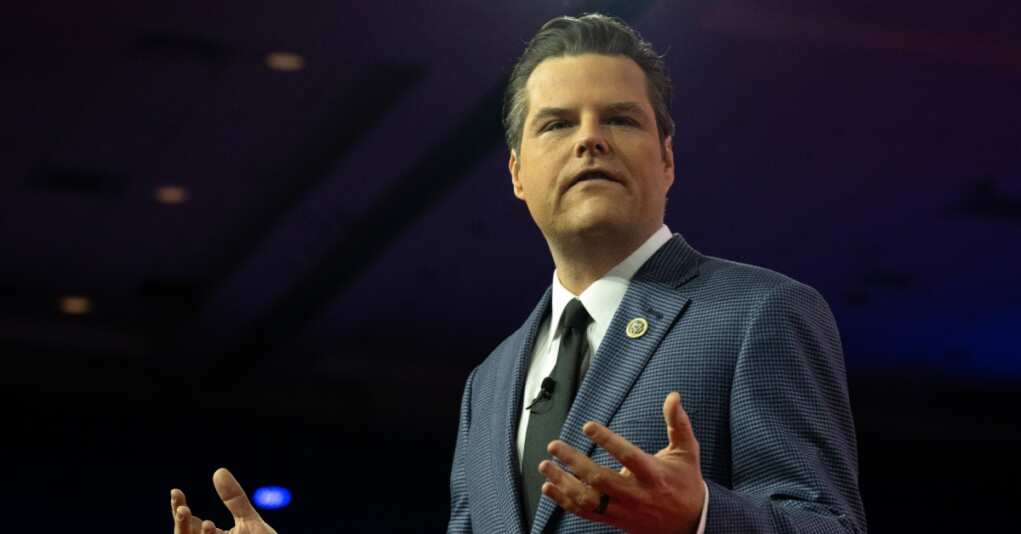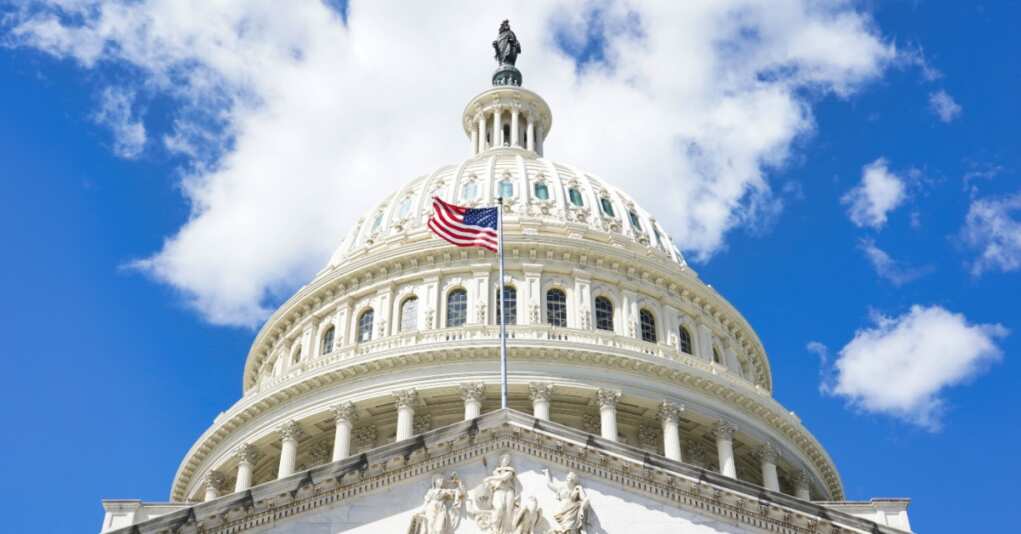The New Right Throws a Party While the GOP Crumbles
In a scene that could be straight out of a political satire, the new right gathered at Turning Point USA’s AmericaFest 2024 in Phoenix, Arizona, to celebrate President-elect Donald Trump and the ongoing disintegration of the Republican Party. While Washington teetered on the brink of a government shutdown, these far-right figures reveled in the chaos, […]
Trump’s Latest Reality Show: ‘The Diplomat’ Starring Mark Burnett
In a casting decision that could only come from the mind of a reality TV star turned president-elect, Donald Trump has appointed Mark Burnett, the British-born producer behind ‘The Apprentice,’ as Special Envoy to the United Kingdom. Yes, you heard that right. The man who brought us ‘Survivor’ and ‘Shark Tank’ is now set to […]
Matt Gaetz’s Extracurricular Activities: When ‘Family Values’ Take a Backseat
In the latest episode of ‘You Can’t Make This Stuff Up,’ former Congressman Matt Gaetz finds himself at the center of a scandal that would make even the most seasoned soap opera writers blush. A House Ethics Committee report has surfaced, alleging that Gaetz, the self-proclaimed champion of conservative family values, has been engaging in […]
From Capitol Hill to Memory Lane: The Curious Case of Rep. Kay Granger’s Disappearing Act
In the ever-entertaining theater of American politics, where transparency is often as elusive as a bipartisan agreement, we now have the curious case of Rep. Kay Granger. The 81-year-old Republican congresswoman from Texas, once a stalwart on Capitol Hill, has seemingly vanished from the political stage, leaving her constituents and colleagues in a state of […]
Shocking Workshops for Immigrants On How to Outsmart Trump’s Deportation Plan
Winston Leiva, who hosts a bilingual workshop, seriously just rattled off a wild list of “tips” for immigrants trying to survive the incoming storm of mass deportations that President-elect Donald Trump plans to unleash upon his return to the White House. Seriously, this is the kind of advice that makes you stop, stare, and ask, […]
How the GOP Can Protect and Strengthen America’s Constitution from the Left
In November, the American people handed President Trump and the Republican Party a sweeping mandate to govern. The 2024 elections weren’t just a victory—they were a landslide endorsement of conservative leadership and values. Naturally, Democrats—having spent the last several years trying to dismantle the very institutions that protect our republic—are now seeking shelter in them. […]
A Season of Giving: How Charitable Americans Shape the Nation
There’s something magical about the Christmas season in America. While the streets are decked out with twinkling lights and holiday music fills the air, the true spirit of the season isn’t found in the mall or under the tree—it’s found in the extraordinary generosity of the American people. No other nation comes close to matching […]
Stop the Robbery: Thousands Push Congress to Fix Social Security
More than 60,000 people are fed up and have signed a petition demanding Congress take action on two unfair Social Security rules. The Senate is inching closer to a vote on the Social Security Fairness Act, which aims to repeal the Windfall Elimination Provision (WEP) and the Government Pension Offset (GPO). These rules unfairly slash […]
The Price of Freedom? NATO Leaders Say It’s Your Healthcare and Luxuries
It’s starting to look like world leaders are taking applications for the next World War, and Europe’s NATO Secretary General, former Dutch Prime Minister Mark Rutte, seems to have thrown his hat in the ring. During The Carnegie Endowment for International Peace conference—Rutte declared that Europeans need to adopt a “wartime mindset.” Translation? Get ready […]
Tampons for Men: Is the New York Times Trying to Out-Woke Itself?
How crazy is this? The New York Times has reportedly added menstrual products to the men’s bathrooms in its Manhattan office this summer. Yep, you read that right. According to internal communications leaked to the Washington Free Beacon, Victor Liu, the VP for Global Real Estate and Facilities, decided it was high time to make […]
How the Left’s Immigration Fantasy Became Their Political Nightmare
For years, Democrats clung to the idea that an open-arms immigration policy was not only morally superior but also politically advantageous. They believed that championing unchecked immigration would create a loyal voter base while appealing to their progressive wing. It was the ultimate win-win scenario—until it wasn’t. Now, as their once-reliable support among Latino voters […]
Scholz Gambles on Losing While Putin Spins the Wheel of Propaganda
So, here’s a twist in global politics: German Chancellor Olaf Scholz is reportedly hoping to lose a vote of no confidence. Yes, you heard that right. The leader of Europe’s largest economy isn’t clinging to power—he’s practically daring his own government to oust him. Why? Because in the convoluted world of German politics, losing might […]
Trump Named Time’s ‘Person of the Year’—Again. And the Left Can’t Handle It
Well, here we are. Time Magazine has once again named Donald Trump their “Person of the Year.” And let me tell you, the pearl-clutching from the left has been nothing short of spectacular. For the second time, the man who the media loves to hate has been honored for his undeniable influence—not just on American […]
Watch: Rosie O’Donnell Blames MAGA and UFOs for Her Face Herpes
Fans of Rosie O’Donnell (yes, there are still a handful of them) have been alarmed recently by what appears to be herpes on the face of the elderly and irrelevant former “star.” O’Donnell has been sporting a big ‘ol herpes zit on her face in social media videos. The notorious enemy of President-elect Donald Trump […]
Is Social Security the Next Victim of Washington Dysfunction?
Here we go again, folks. The Social Security Administration, that trusty government agency tasked with ensuring Americans can retire without resorting to selling their furniture, is now waving the warning flag. What’s the crisis this time? Oh, just the small matter of “funding disputes” in Congress. You know, the same Congress that can’t agree on […]
















